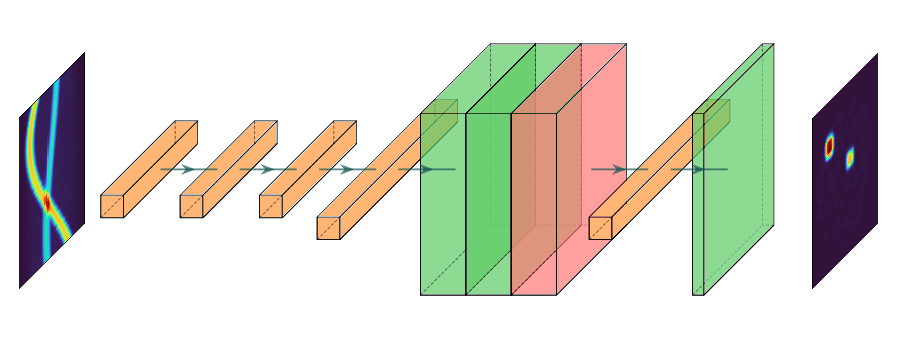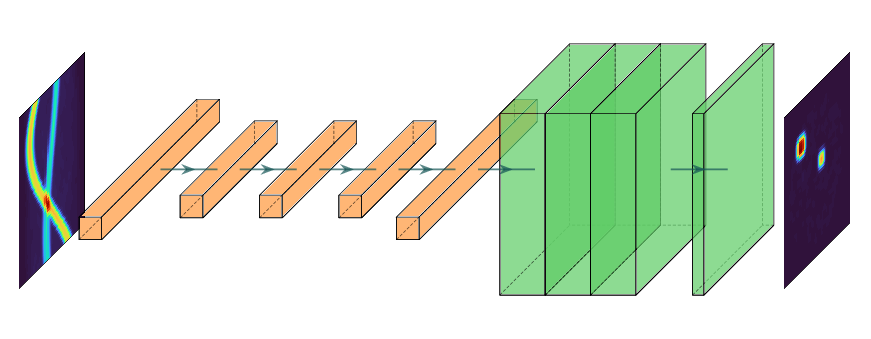Models available¶
This is a list and a brief description of the various models that are currently available in superres-tomo. More detailed information about each of the models can be found in their individual module documentaion. Additionally example use cases are provided in the tutorials.
Automap¶
Automap is a network architecture that was specifically developed for tomogrpahic reconstruction. [1] We have implemented the architecture here. While we find that Automap does perform very well, we have alsofound that the dense connections mean that the architecture memory requirements scale very badly and it cannot deal with many typical sinograms.

cnn_reconstruct¶
This module contains a CNN model for tomographic image reconstruction. For more details on how to use this follow the tutorial on reconstruction with a CNN.

dense_reconstruct¶
This module contains a densely connected model for tomographic image reconstruction. For more details on how to use this follow the tutorial on reconstruction with a dense network.

AlexNet¶
AlexNet is a specific instance of a CNN. It became famous in 2012, when it outperformed all of the competition in the ImageNet challenge. AlexNet contains eight layers; the first five are convolutional layers, some of them followed by max-pooling layers, and the last three are fully connected layers. [2] It uses the ReLU activation function.
U-Net¶
The U-net architecture is particularly popular in image segmentation tasks. The model consists of convolution layers mirrored by deconvolution layers, squeezing down and then reconstructing an image of the same size as the original. Doing this a U-Net can convert pixels in the original image into label values and segment the image. U-nets were initially developed for biomedical image segmentation. [3]

Autoencoder¶
An autoencoder is a type of artificial neural network used to learn efficient data codings in an unsupervised manner. [4] The aim of an autoencoder is to learn a representation (encoding) for a set of data, typically for dimensionality reduction, by training the network to ignore signal “noise”. For this reason autoencoders can be used for denoising images.
References¶
| [1] | Bo Zhu, Jeremiah Z. Liu, Bruce R. Rosen, Matthew S. Rosen “Image reconstruction by domain transform manifold learning” https://arxiv.org/pdf/1704.08841.pdf |
| [2] | Krizhevsky, Alex; Sutskever, Ilya; Hinton, Geoffrey E. (2017-05-24). “ImageNet classification with deep convolutional neural networks” (PDF). Communications of the ACM. 60 (6): 84–90 |
| [3] | Ronneberger, Olaf; Fischer, Philipp; Brox, Thomas (2015). “U-Net: Convolutional Networks for Biomedical Image Segmentation”. arXiv:1505.04597 |
| [4] | Vincent, Pascal; Larochelle, Hugo (2010). “Stacked Denoising Autoencoders: Learning Useful Representations in a Deep Network with a Local Denoising Criterion”. Journal of Machine Learning Research. 11: 3371–3408 |